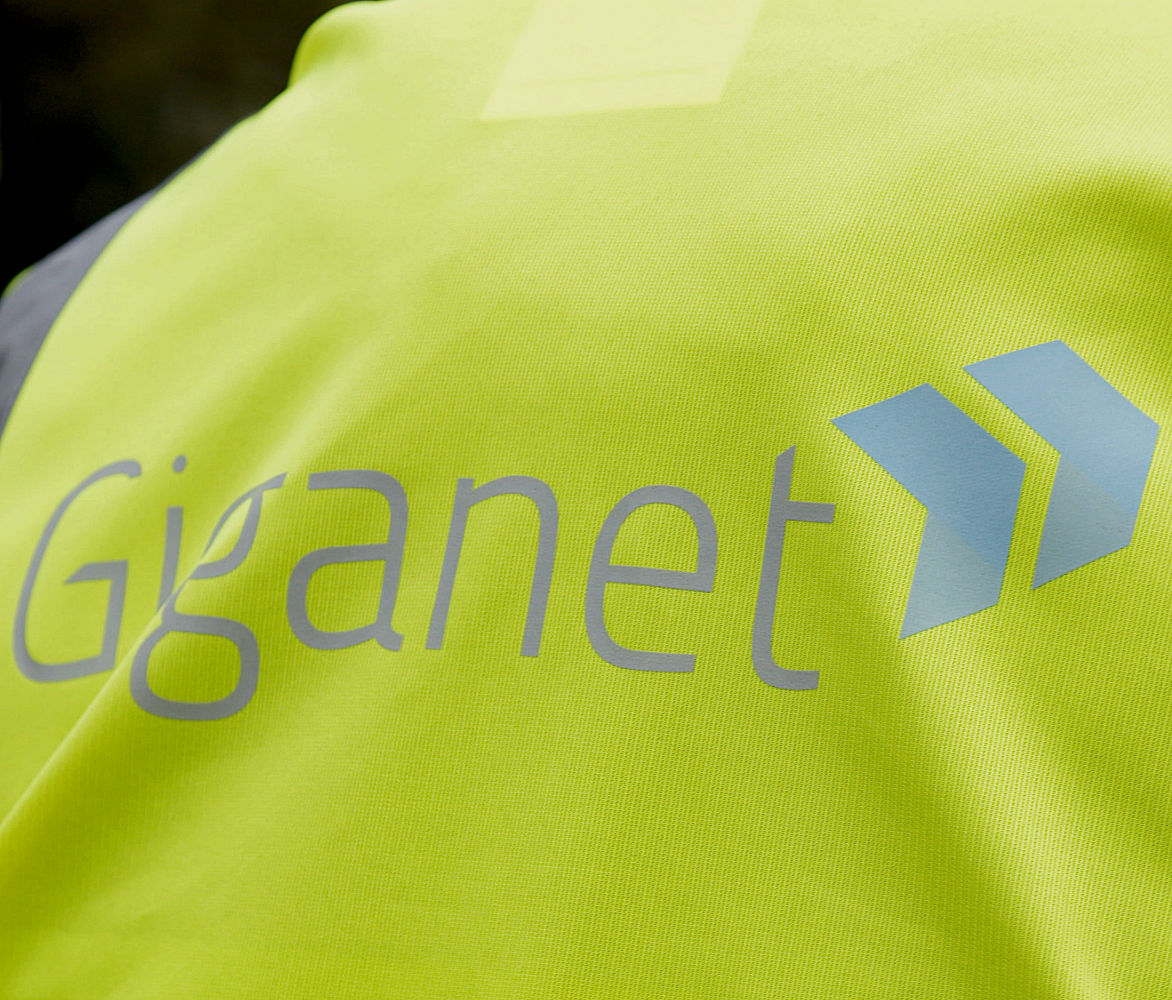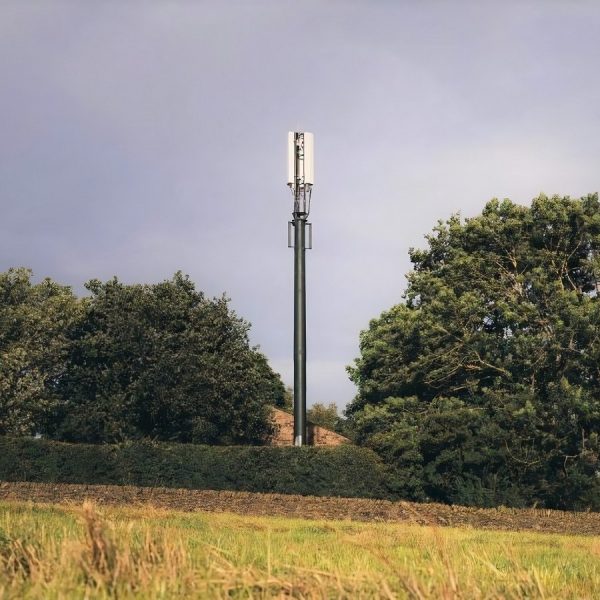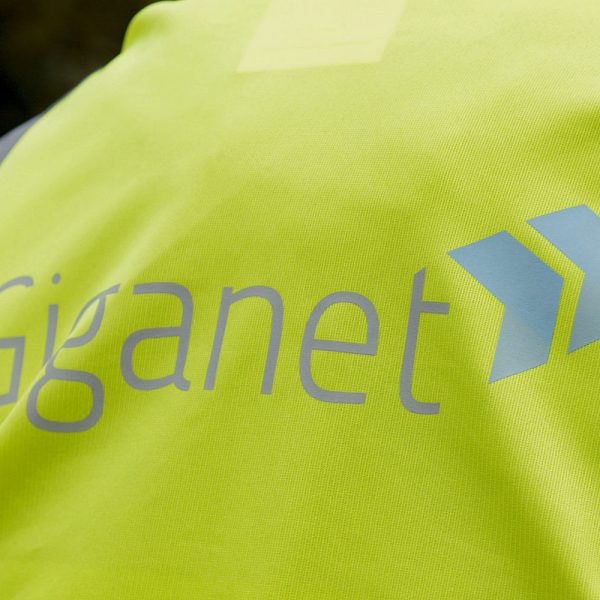VX Fiber – What UK FTTP Broadband Projects Can Learn from Sweden

5. The Government has now revealed the strategy for their £5bn UK Gigabit Broadband programme, which has adopted a mix of vouchers, gap funded deployments and some continuation of the Local Full Fibre Networks (LFFN) model (i.e. dark fibre for public sector sites). But it also softened the initial coverage target to a “minimum” of 85% (UK premises) by the end of 2025 and only released £1.2bn to support that.
After that there’s talk of more investment being released to help the scheme “get as close as possible to 100%” coverage, but only if the “industry can demonstrate it has the capacity to deliver further and faster.”
In terms of pros and cons, what are your thoughts on the new gigabit programme as it exists today?
Mikael’s Answer:
It came as no great surprise to the digital infrastructure industry, when the target to connect 100% of UK homes and businesses was reduced to 85% – it had always been seen as a political ambition.
The UK Gigabit Broadband programme (including the various funding and investment options); and other announcements that have been made during past Spending Reviews, Budget Statements, election manifestos and Queen’s Speeches – are proof of the UK Government’s commitment to getting the UK connected. Despite this, one of the main barriers to the deployment of a UK-wide FTTP network is funding – particularly in rural areas. What is on offer from the UK government merely scratches the surface of what it needed to get to 85%, let alone 100%.
First, it would be remiss of us to forget – or not acknowledge – that over the past 18 months the country’s fiscal position has substantially worsened. The pandemic has placed an enormous and unexpected burden on the UK economy. However, the resulting financial strain must not be allowed to derail the UK’s infrastructure spending ambitions – it will be internet connectivity that helps the UK with future economic growth and ‘building back better’.
Secondly, let’s be clear that the Government’s policy for ‘gigabit-broadband infrastructure’ has always been that it will be mostly built by private investment. And at a time when public purses have been stretched by unprecedented COVID-19 support measures, the industry cannot, and should not, rely solely on public funding.
The private sector now has an even more important role to play in helping to bridge the gap needed to deliver the Government’s ‘Connected Britain’ vision. In this context, private funding and/or investment is one of the solutions available to fibering up, faster. In fact, private sector investment should be a major driver of the UK’s ‘infrastructure revolution’.
Here lies the problem – it’s not always been made that easy for private investors to play their part. The government, together with OFCOM, made a commitment to make policy reforms to promote a competitive market for the roll-out of gigabit- capable infrastructure. But a lack of clarity surrounding the availability of private investment opportunities within infrastructure projects still exists.
A vital part of any ‘UK Gigabit Broadband Programme’ needs to address how the UK Government plans to reinvigorate the infrastructure ‘investment’ market to support its ambitious infrastructure agenda, and provide better connectivity, at good value for taxpayers. Part of this is for the Government to commit to an approach that gives confidence to investors and capitalises on the attributes of businesses and the public sector. One way of doing this is to open-up – and communicate the availability of – individual regional or local digital infrastructure projects to multiple external investors. Not only does this present a huge and scalable opportunity it could open-up a more sustainable territory for private investors. This will help the UK establish itself once again as a world class destination for investment.
6. Two of the biggest challenges faced by all operators during 2020, and into the first half of 2021, has been the global COVID-19 pandemic and Brexit (e.g. the January 2021 trade agreement). Combined, these two issues have placed complex pressures on everything from the workforce (there was already an issue with a lack of skilled fibre engineers) to supply chains. What problems did these cause your own company and how did you adapt?
Mikael’s Answer:
For VX Fiber, collaboration has always been at the heart of our operations. Working closely with key stakeholders during the global pandemic has been crucial to see us safely through these difficult times. Our goal hasn’t faltered, a gigabit-connected Britain remains well and truly in our sight.
When it came to the challenges we faced as a workforce, these were predominantly concerned with day-to-day working practices. During the first lockdown in 2020, the telecoms industry was added to the list of the critical sectors vital to the Government’s response to the pandemic. It also made the decision to actively encourage local authorities not to introduce blanket refusals of permits or notices for street works. In pre-COVID times, the process to get the greenlight to undertake street works to install fibre could take up to 3 months.
Along with others in the industry, VX Fiber worked closely with the Government to ensure strict adherence to guidelines and directives – ensuring that the health and safety of contractors, staff, customers and the general public were the number one priority for the business. The key-worker status – given by the government, meant that the industry was able to forge ahead with the roll-out of new full fibre networks, but with modifications that considered all tasks through a protection-orientated lens.
Any works involving network maintenance and fault repairs, customer repairs, network build and increasing network capacity were able to continue as normal. Although most new installations in customer premises were put on hold during the critical lockdown period, these are starting to be reinstated against stringent operating procedures. The industry was, and still is, committed to ensuring that targets are not side-lined by the coronavirus crisis, so it has been prepped and ready to get customers connected in the safest possible way.
The pandemic is continuing to hamper some parts of the full fibre connectivity supply chain, but the government’s response enabled network construction to accelerate. Those involved in the rollout of full fibre adapted to the working environment to ensure there was no significant delay to gigabit speed rollout across the UK.
7. This year saw Ofcom publish the outcome of their first combined Wholesale Fixed Telecoms Market Review 2021-26 (FTMR), which proposed major changes to help boost investment in “full fibre” broadband and high-capacity Ethernet services for residential and business connectivity markets. What do you think they got right, and what do you think they got wrong (if anything)?
Mikael’s Answer:
The emphasis on wholesale I think is absolutely right. However, as mentioned earlier, the main barrier to getting Britain connected is funding. Private investment – in addition to public funding – is needed if the UK government is going to hit the 85% target. However, it’s not always been made that easy for private investors to play their part. The Government, together with OFCOM, made a commitment to make policy reforms to promote a competitive market for the roll-out of gigabit- capable infrastructure. But a lack of clarity surrounding the availability of private investment opportunities within infrastructure projects still exists. This needs to be addressed, and this needs to happen fast.
8. Earlier this year Ofcom also proposed a new “one touch” migration (switching) system for UK broadband ISPs (here), which from December 2022 will make it easier for consumers to switch between ISPs on physically separate networks (i.e. extending the existing Gaining Provider Led [GPL] solution to include alternative networks, rather than just Openreach).
Broadly speaking this new system, while adding new challenges for smaller providers, will still represent an important change that should help alternative networks to attract customers away from the biggest players. But are there any areas where you think Ofcom could have improved their proposed approach?
Mikael’s Answer:
Consumers often run into trouble if they wish to swap from a bundled package (e.g. broadband and phone) to, for example, a standalone broadband deal because your old ISP could end up charging you more for the line rental to remain with them if they cannot also serve you broadband. Subscribers on service bundles are not being offered clarity when they only want to buy a part of what is being offered. I believe in a future when consumers are free to choose the best service from the best suppliers and can easily combine these in a way that suits them (not the supplier). Such regulation has already been implemented in Germany for example and I think this is an area that needs to be addressed with urgency in the UK.
9. Over the next four years we will increasingly see the market move away from traditional phone lines (PSTN) and adopt a more IP (e.g. VoIP) based future, which requires ISPs to be prepared with alternatives (something full fibre providers already need to consider).
What kind of solutions do you offer for this and how will you tackle situations where a home covered by your network may only require a home phone service (i.e. no broadband), possibly as part of a migration away from traditional (non-IP) phone provider?
Mikael’s Answer:
This is clearly an important issue, especially for vulnerable subscribers. Our independent Service Provider partners are well-equipped to provide the necessary IP alternatives and increasingly subscribers are turning to mobile solutions for their voice services.
10. At the time of writing there are around 70-80 alternative network providers that are building gigabit-capable fibre networks for consumers (summary). The market is becoming increasingly crowded for altnets and history suggests that a rise in consolidation will almost inevitably follow at some point. What are your views on the potential for future consolidation in the market, and do you see your own network as being ripe for purchase by a rival further down the road?
Mikael’s Answer:
It’s encouraging, and we are proud, to see so many altnet providers including VX Fiber become such a driving force in helping the UK to achieve its ubiquitous internet connectivity goals. Interestingly, to build and to own passive fibre infrastructure does not benefit much from economies of scale and therefore many small [passive] fibre networks can survive well. When it comes to operating such networks, or indeed selling services, there are however, very large economies of scale. As a fibre operator partner VX Fiber can bring such scale to a small [passive] fibre network and thus we would benefit from a fragmented [passive] fibre market. Based on these economic fundamentals, in most markets we observe consolidation in the service sector first where economies of scale are the greatest.
11. One other significant risk from the emergence of so many altnets is that it will probably fuel a greater degree of consumer confusion, thus making the market much harder for the ordinary individual to understand (i.e. lots of different networks, with different availability and different ISP choices etc.). What do you think should be done to help communicate and simplify the market for consumers?
Mikael’s Answer:
I strongly believe in the need to reignite the debate around fibre confusion. Your review in December 2020 “WIK Study Finds Consumers Still Confused by Fibre Advertising” highlighted the need for the UK to introduce much stronger guidelines and/or legislation to help dispel this confusion. The clearest and most user-friendly approach could be the introduction of a labelling scheme similar to the traffic lights introduced in Italy, whereby technologies with differing characteristics would be colour-coded. The approach taken in France where only ISPs delivering fibre into the home or premises are permitted to use the term ‘fibre’ in advertising material is another model that has merit in its simplicity.
12. Commercial competition between full fibre providers in urban areas has become increasingly aggressive. Indeed, over the past few months we’ve started to see more examples where three providers have all built networks in the same area (overbuild).
The Government’s 2018 Future Telecoms Infrastructure Review (here) made clear that “at least a third (with the potential to be substantially higher) of UK premises are likely to be able to support three or more competing gigabit-capable networks.”
On the one hand this gives consumers extra choice and a better chance of getting a good deal. On the other hand, locals suffer more disruption from multiple builds, while overbuild does little to improve overall UK coverage and can also make it harder for providers to attract investment by stretching the payback period or risk. What is your position on all this?
Mikael’s Answer:
I am a strong proponent of creating a competitive environment which enables customers to enjoy exceptional services and freedom of choice at competitive prices. However, as you say, aside from the fact that overbuild does little to improve overall UK coverage, why put local residents through the disruption of multiple builds. It would make sense not to overbuild existing networks and avoid deploying a second or even third fibre network to areas where an open access full fibre network already exists. Instead, why not lease capacity from existing network operators? Why not work with other network providers, instead of overbuilding them, at least until we have full coverage across the UK?
13. Speaking of competition and overbuild. Last year the Independent Networks Co-operative Association (INCA) proposed the creation of a Common Wholesale Platform (CWP), through which alternative networks could provide wholesale services to third-party providers and ISPs.
INCA believes that a CWP would enable groups of independent wholesale network providers to “combine together and offer a real competitive alternative to the limited number of large players which currently dominate the market.” What are your thoughts on the pros and cons of this idea?
Mikael’s Answer:
Fundamentally, offering a large as possible universe to Service Providers through one interface would make the altnet sector more competitive. It is however really important to understand that it is not just a question about a technical interface. Service Providers should be offered standard commercial and operational interfaces as well. VX Fiber has such interfaces, which have been honed over our 20-years of operating history and we are keen to help unify the altnets for the benefit of Service Providers. VX Fiber is, and always will be, a ‘true’ Open Access operator – giving customers a choice and the ability to select the services that match their specific needs from a wide-range of Service Providers.
As the average UK consumer does not yet see the difference between the fibre and the service, UK residential and SME business customers can buy both a fibre connection and service, as a single proposition from LilaConnect.co.uk (VX Fiber’s sister company and fibre-deployment business) until we begin to get a level of “fibre maturity” seen in other European countries. But as a neutral wholesaler, VX Fiber is committed to building and operating open-access full-fibre networks, information on – and business profiles for – a host of additional Service Providers’ is available on the LilaConnect website. Customers can contact the Service Providers directly if they choose to buy their services.
We’d just like to take a moment to thank Mikael Sandberg for providing such detailed and constructive responses to our interview questions. We look forward to seeing how VXF and Lila progress over the coming years.
Mark is a professional technology writer, IT consultant and computer engineer from Dorset (England), he also founded ISPreview in 1999 and enjoys analysing the latest telecoms and broadband developments. Find me on X (Twitter), Mastodon, Facebook and Linkedin.
« Benchmarking Broadband ISP Speed Testers On a 10Gbps Line
Latest UK ISP News
- FTTP (5515)
- BT (3514)
- Politics (2537)
- Openreach (2297)
- Business (2262)
- Building Digital UK (2244)
- FTTC (2043)
- Mobile Broadband (1973)
- Statistics (1788)
- 4G (1664)
- Virgin Media (1619)
- Ofcom Regulation (1461)
- Fibre Optic (1395)
- Wireless Internet (1389)
- FTTH (1381)





























































I really like that traffic light system idea.
Doesn’t Sweden have a lot higher % of MDUs than UK, hence far easier/quicker to roll out FTTP?
Approximately 20% of the UK populations lives in MDUs or flats compared to about 50% in Sweden. However, Sweden’s land mass is 85% larger than the UK and therefore the population density is much lower, making utilities more expensive to provide. Sweden had, through its policies, a head start, but at 71.46% FTTP and Gigabit coverage of 76.75% Northern Ireland isn’t far below Swedish levels showing what can be done.
85% of the population lives in an Urban area, and most of the population lives in either Stockholm or Gothenburg, so when you’ve got the majority of your population living in big blocks of flats in just one or two cities and a much smaller number of rural properties the job is considerably easier. Although owning a summer house in Sweden is quite popular and a few people have FTTP plumbed in there too. Getting someone out with a digger and laying a cable costs a fraction of what it costs 20 people to turn up and watch 1 guy dig a narrow trench.
Bandwidth in and out of the country for residential ISPs isn’t great however. I might get 200-300mbit on a gigabit line with bbb (swedish isp) but full gigabit within Sweden.
Ooo… Bristol is in Somerset ? Fighting talk. South Bristol was in Somerset and North Bristol was in Gloucestershire until 1373; since then all of Bristol has been in neither. There was brief (1974–96) confusion with the now-defunct county of Avon but Bristol is independent again.
Here in independent Bristol, I have Openreach and Virgin Media fibre up my drive. Are VX hoping, perhaps with Government enforcement, to buy up these fibres or at least long term lease ?
1373, those were the days.
Maybe if OFCOM hadn’t nailed down BT so much, we’d be reading about BT investing in Sweden rather than a Swedish company investing in the UK. It feels like the UK just pins its own companies down, and gives a free ride to Foreign entities. It’s a sad state of affairs when UK regulators diminish UK companies and allow Foreign companies to creep in, damaging UK companies and Pension investments. It’s about time BT’s allowed to fightback, rather than suffer the same fate as many utility companies, like EON (German owned), EDF (French), N Power (German), Scottish Power (Spanish). I don’t see Virgin Media/O2, or CityFibre contributing anything to British Pension Funds, since they’re privately owned by Foreign companies.
Don’t get me wrong, I don’t see any of the Altnets/VMO2 as a threat to BT/Openreach; I just wanted to air my view of what I see as wrong with the UK’s attitude toward it’s own companies. Where would the Altnets, and VMO2, be if the regulator didn’t have their backs?
Ofcom should have required that BT divest itself of Openreach years ago. BT invested in Sport rather than fibre. It has only itself to blame that this opened the market to other operators to enter and steal a slice of the action from under their noses. Playing catch up will cost BT and its shareholders dearly.
“It has only itself to blame that this opened the market to other operators to enter and steal a slice of the action from under their noses. Playing catch up will cost BT and its shareholders dearly.”
Not really. Had BT invested in FTTP 15 years ago, Ofcom would have just forced BT to open the new network to other operators anyway. The timing of the current BT/Openreach FTTP rollout isn’t only due to new Altnets and VMO2, much has to do with the PSTN switch off, and the ending of the leaseback agreement with Telereal around 2031. BT’s timing for FTTP was probably pencilled in 20 years ago, as well as being driven by the regulatory environment. The Altnets don’t have the scale of BT, they need BT infrastructure to support their business model, and BT therefore takes a slice of everything they earn.
Openreach is just a workforce and Infrastructure management company, BT own the Ducts, poles, Fibres, and Wayleaves. Once the FTTP rollout’s are completed, and BT pension deficit resolved, Openreach will likely be much slimmer with much less “internally” generated revenue, at which point BT may well decide to divest of them.
‘I don’t see Virgin Media/O2, or CityFibre contributing anything to British Pension Funds, since they’re privately owned by Foreign companies.’
VMO2 is publicly owned via parent Liberty Global. Liberty Global PLC not only may appear in pension fund investment portfolios but in some cases as a FTSE 100 has to.
CityFibre has publicly traded investors that will, in time, hopefully see some benefits that in turn filter through to those owning their shares.
NTT seem to be doing okay. They were made to relinquish retail services entirely. They can only sell wholesale fixed lines.
Various others had their networks nationalised and are doing okay as retail and reseller operations.
Many of BT’s European peers are doing okay. They operate under similar regulatory frameworks.
While regulation is a barrier to BT for sure their issues stem from their attempt at world domination around the turn of the century, their enormous pensions bill and their legacy as a formerly public sector entity.
Divesting them gets complicated. Who takes the pensions bill and to what proportion? How is the debt split between the units? By the end of the FTTP rollout Openreach will have accumulated a fair amount of debt and how much of the pension burden remains who knows?
Small matter of it also suddenly being within BT’s best interests to fully declare all Openreach revenue rather than any creative accounting that might be employed to shift it to less regulated units.
All good fun.
I think you’re missing the point. If BT had been required to divest itself of Openreach that would have separated the physical infrastructure from BT – the very ducts, poles and associated equipment and rights you refer to. BT would have continued as a services provider. As an asset of national importance the government could have required safeguards be put in place as regards its control. BT as a service provider would have been left to pursue its commercial ambitions.
“VMO2 is publicly owned via parent Liberty Global. Liberty Global PLC not only may appear in pension fund investment portfolios but in some cases as a FTSE 100 has to.”
At a stretch you are possibly correct, but Liberty Global and Goldman Sachs are both US listed companies and would likely represent miniscule holdings in UK pension funds.
“Divesting them gets complicated. Who takes the pensions bill and to what proportion? How is the debt split between the units?”
BT’s pension fund deficit is smaller than you might think, at the last Triennial review they estimated the deficit at £7.98bn, but the actual IAS 19 accounting (True) Deficit was £4.2bn Net of Deferred tax, as of the 31st March 2021. I read an interview in January where Frank Naylor(CIO of BTPS) stated, “We see our role as managing the funding risk in the scheme, and building towards a DIY buyout”, so Openreach could easily split off under those circumstances, as the pension fund would be independent of both BT and Openreach.
Since BT owns all the assets, I expect Openreach would divest debt free, with BT carrying all the outstanding debt. BT’s Net Debt came in at £17.8bn, but that includes lease liabilities of £6.1bn, which should reduce over time as buildings are handed back to Telereal. BT’s finances are pretty good in my opinion, with massive cost cutting potential, not that anyone would think so with the narrative pumped out in much of the press; BT have also stated £2bn a year annual cost saving by 2025, which is another plus as far as I’m concerned. Admittedly I’m a BT shareholder, but I’m more than happy that my investment is safe.
“The timing of the current BT/Openreach FTTP rollout … much has to do with the PSTN switch off”
Not really. The PSTN can be switched off without laying a single metre of fibre, and in many places this is what will happen. In those areas, voice will move to VOIP over xDSL.
This does of course assume *some* level of usable IP connectivity, which the USO was supposed to provide.
Liberty moved their primary listing to the FTSE when they purchased VM.
FYI: BT are also listed on the US stock exchange.
Pension funds invested a bunch in BT due to dividends. I believe those are suspended right now so chances are pension funds moved some money to better performing stocks paying dividends.
Investors working on behalf of pension funds obsessively holding onto a stock as it loses over half its value and suspends dividends would be an interesting way to look after their customers’ money indeed.
@Mark.
The city of Bristol is in the county of Bristol, not Somerset.
Yep, ganted county status in 1373 & Royal Charter in 1155.
They could have learnt from the British Car industry, Resist change, stubbornly refuse to improve and innovate and all the time proclaim to be the best, as your competition does the opposite eating away at your market share and profits.
@Ex Telecom Engineer: “Since BT owns all the assets, I expect Openreach would divest debt free, with BT carrying all the outstanding debt”
That makes no sense: what kind of business would Openreach be without assets? Answer: a poor one which few investors would be interested in. I can’t think of any other infrastructure company which doesn’t own the assets it needs to operate its business. You really cannot imagine Openreach being enthusiastic about maintaining and expanding assets owned by another company.
“You really cannot imagine Openreach being enthusiastic about maintaining and expanding assets owned by another company.”
There are loads of companies, formed via outsourcing, that continue to maintain/manage the previous parent company assets. Openreach are already serving more than one customer, BT being one, others being the various Altnets and VMO2. Because of Openreach’s size, it’s big enough to be formed into a company in its own right, but that doesn’t mean Openreach need to own the assets they manage and maintain. The value of Openreach would be based on the value of its contracts and revenue, not on any assets it looks after. BT will still own its ducts, Fibres, poles and Wayleaves, with other providers owning the Fibres installed on their behalf, but paying rental to BT where they utilise BT infrastructure.
“That makes no sense: what kind of business would Openreach be without assets? Answer: a poor one which few investors would be interested in. I can’t think of any other infrastructure company which doesn’t own the assets it needs to operate its business.”
Is Openreach an infrastructure company, or is it just a workforce management and installation/maintenance company, providing a service to its customers?
From Wikipedia
“In March 2017, after various negotiations with, and demands from, Ofcom, BT plc agreed to divest Openreach’s staff and non-network assets into a legally separate company, Openreach Limited. However, the network assets would still be owned by BT plc to ensure the longevity of leases and covenants, and Openreach Limited would still be wholly owned by BT plc’s parent holding company, BT Group plc.”
https://en.wikipedia.org/wiki/Openreach
… and that’s the confused approach which symbolises all that is wrong with BT and Openreach. What has been quoted from Wikipedia (!) is the imbecilic arrangement that BT was allowed to get away with rather than the full separation and divestment which should have occurred. It’s a nonsense for BT to hold assets rather than Openreach. The same approach wasn’t taken with National Rail (Railtrack) and the train operating companies. In any event, the recent change in shareholding at BT signifies there is going to be change coming and it will be interesting to see what reaction the UK government has to it,
@Chris M: “confused approach which symbolises all that is wrong with BT”
I have to agree with you. Fibre access networks especially should be treated like a vital utility, as part of a national infrastructure project, which could then be used by various service providers, e.g. ISPs, to offer their products.
Openreach Limited isn’t a “proper” company in that it’s still owned by BT. If it were spun off into an independent company it will have to have its assets and liabilities including its share of the pension liabilities. The latter is a problem: if BT retains all pension liabilities BT will need Openreach to help fund cash contributions, or pension liabilities for former and current Openreach employees could be transferred to a newly established Openreach pension scheme which will almost certainly be less beneficial – and therefore less attractive – for Openreach employees.
Either way a spin off is problematic and both BT and Openreach benefit by being closely tied together.